AWS PrivateLink
Note
This feature is only available with the EMQX Dedicated and Dediated Flex editions.
This page provides detailed instructions on enabling the PrivateLink feature for EMQX Broker deployments on the Amazon AWS platform. By enabling PrivateLink, your EMQX deployment can access AWS-hosted services through a secure and private connection within your virtual network. This ensures that communication remains isolated from the public internet, improving both security and performance.
In this setup, your EMQX Broker deployment’s Virtual Private Cloud (VPC) acts as the service user, establishing a connection to the service provider’s VPC, where your AWS resources reside.
Create Endpoint Service Using AWS PrivateLink
This section demonstrates the steps to create an AWS Endpoint Service using AWS PrivateLink, which allows EMQX deployments to securely connect to AWS services. This is crucial for ensuring that your EMQX deployment communicates privately and directly with AWS services via a private connection within the VPC. This process involves setting up the required AWS resources, configuring load balancers, and enabling PrivateLink in the EMQX Broker.
Obtain AZ ID from EQMX Cloud Console
When creating an Endpoint Service in AWS, the Availability Zone ID (AZ ID) of your Load Balancer (LB) must match the AZ ID in your EMQX Broker deployment. To obtain the AZ ID:
- Go to your deployment in the EMQX Cloud console.
- Click Network Management from the left menu. Navigate to the PrivateLink area and click +PrivateLink.
- In the PrivateLink Guidelines pop-up dialog, you will see the availability zone details for the deployment.
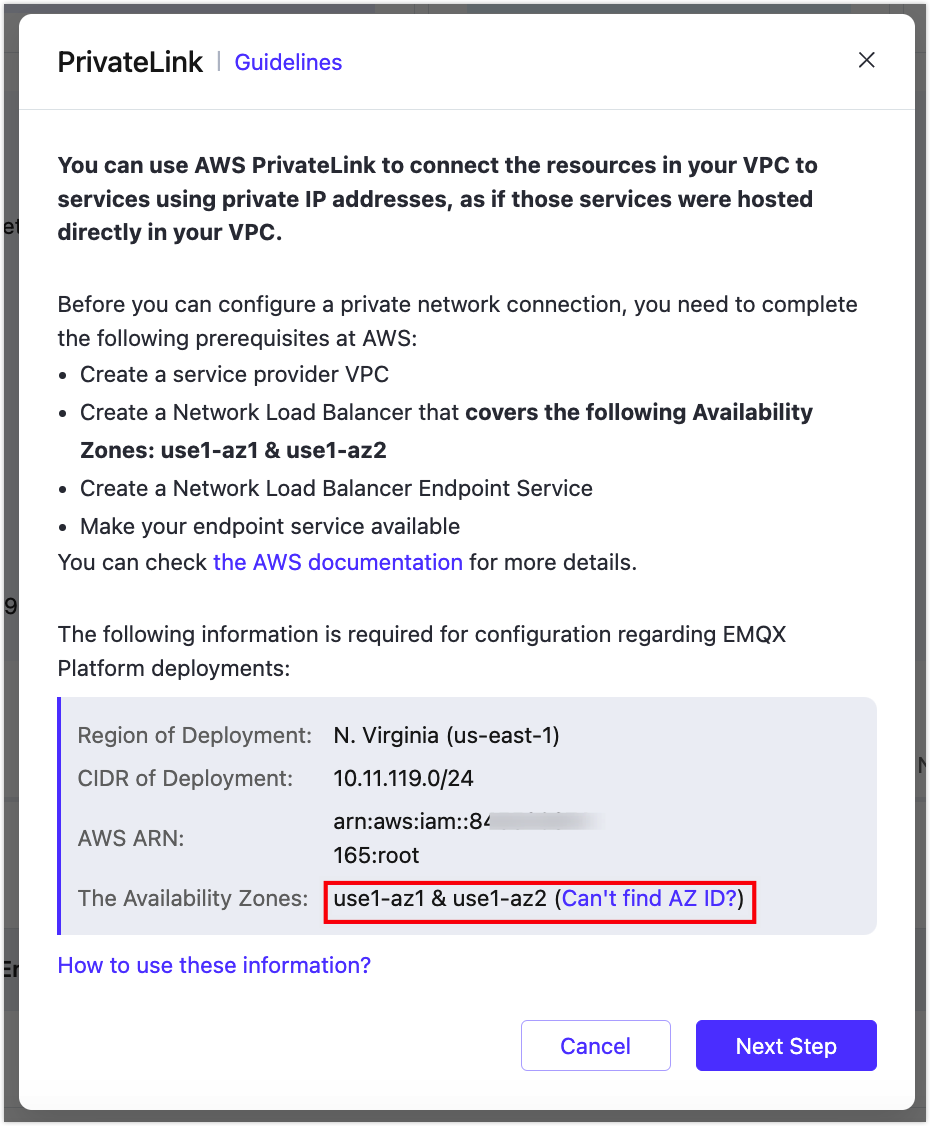
Complete Preparatory Steps on the AWS Platform
Before configuring PrivateLink, complete the following steps on the AWS platform.
Register an AWS account and enable the PrivateLink service.
Create an EC2 instance and VPC.
Create a target group for load balancing.
On Basic configuration, set the Target group name, Protocol (TCP), and Port.
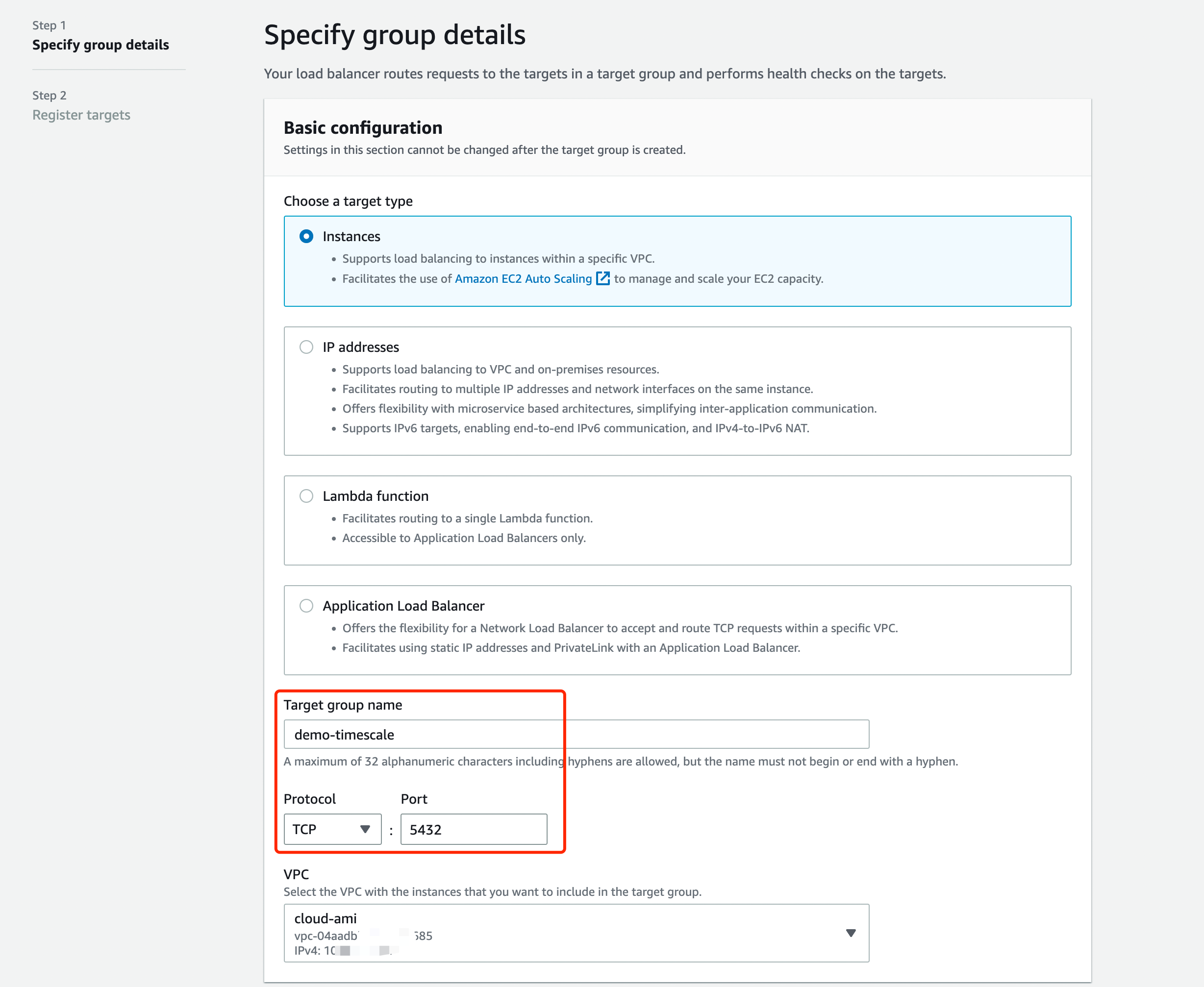
On Health checks, set the Override port, and for the rest, you can keep the default setting or set as your business needs.
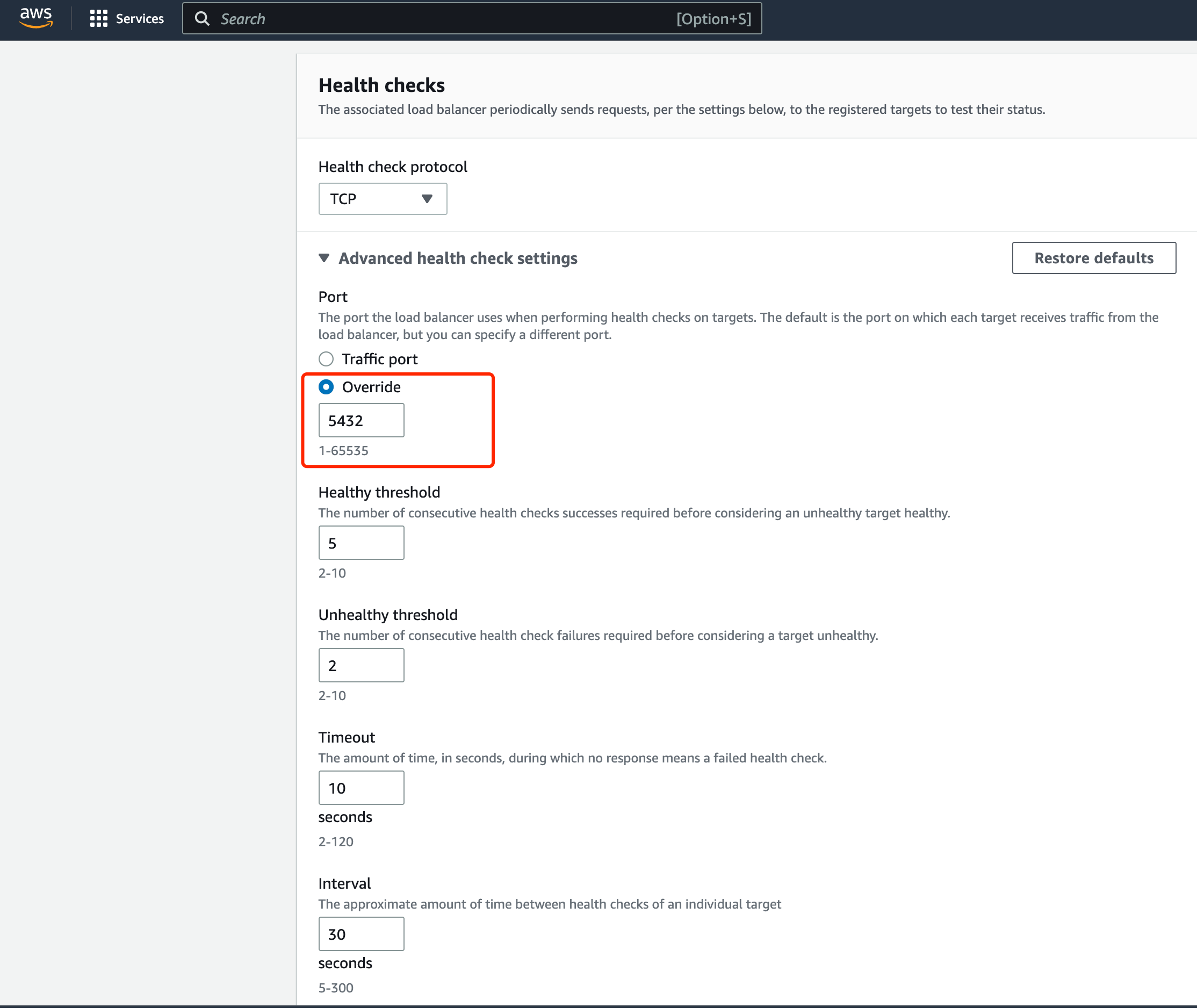
Register target group and create instance.
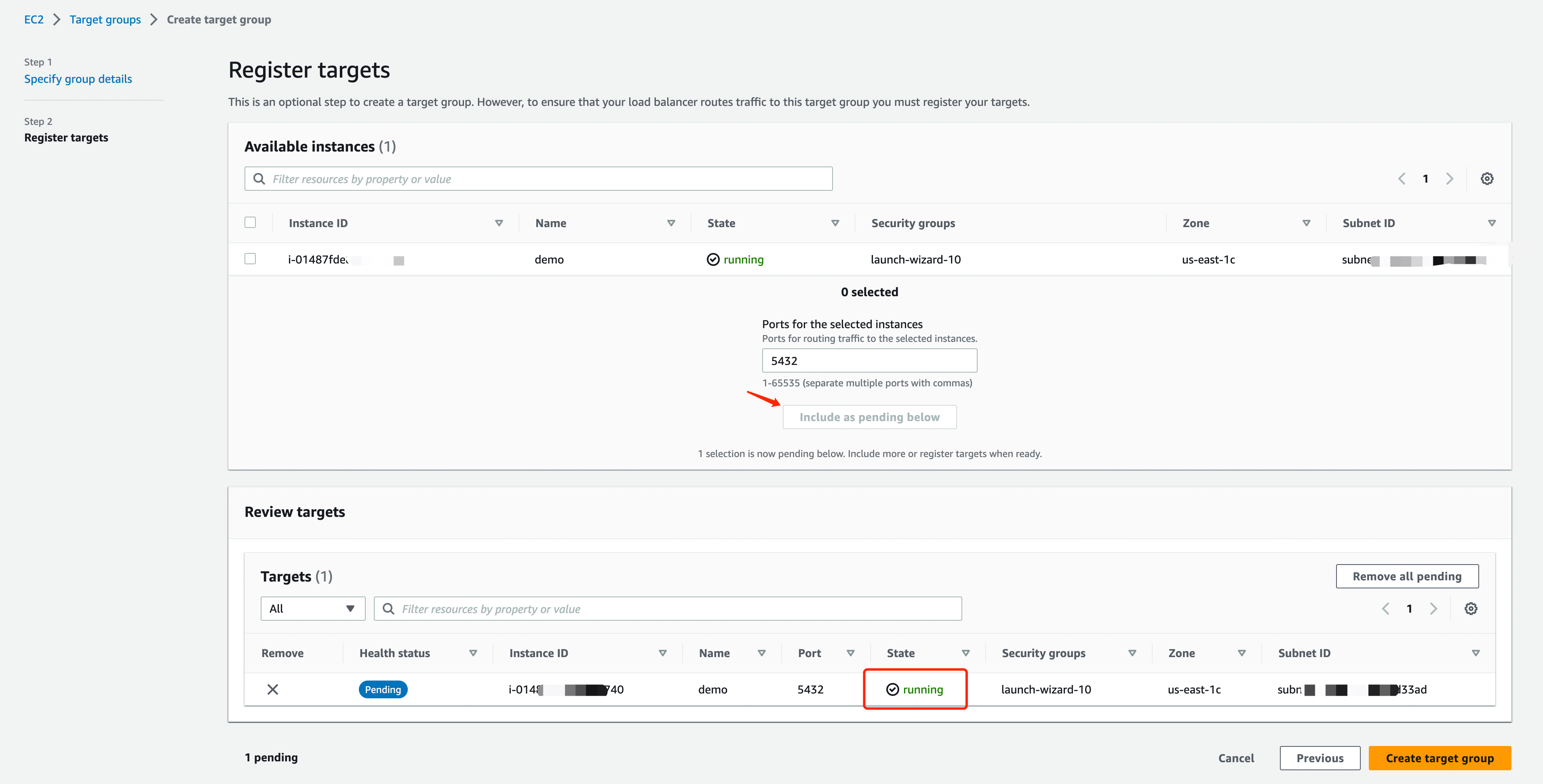
Create and configure the LB with the AZ ID you obtained from EMQX Cloud console.
Select Network Load Balancer as the type of load balancing and click Create.
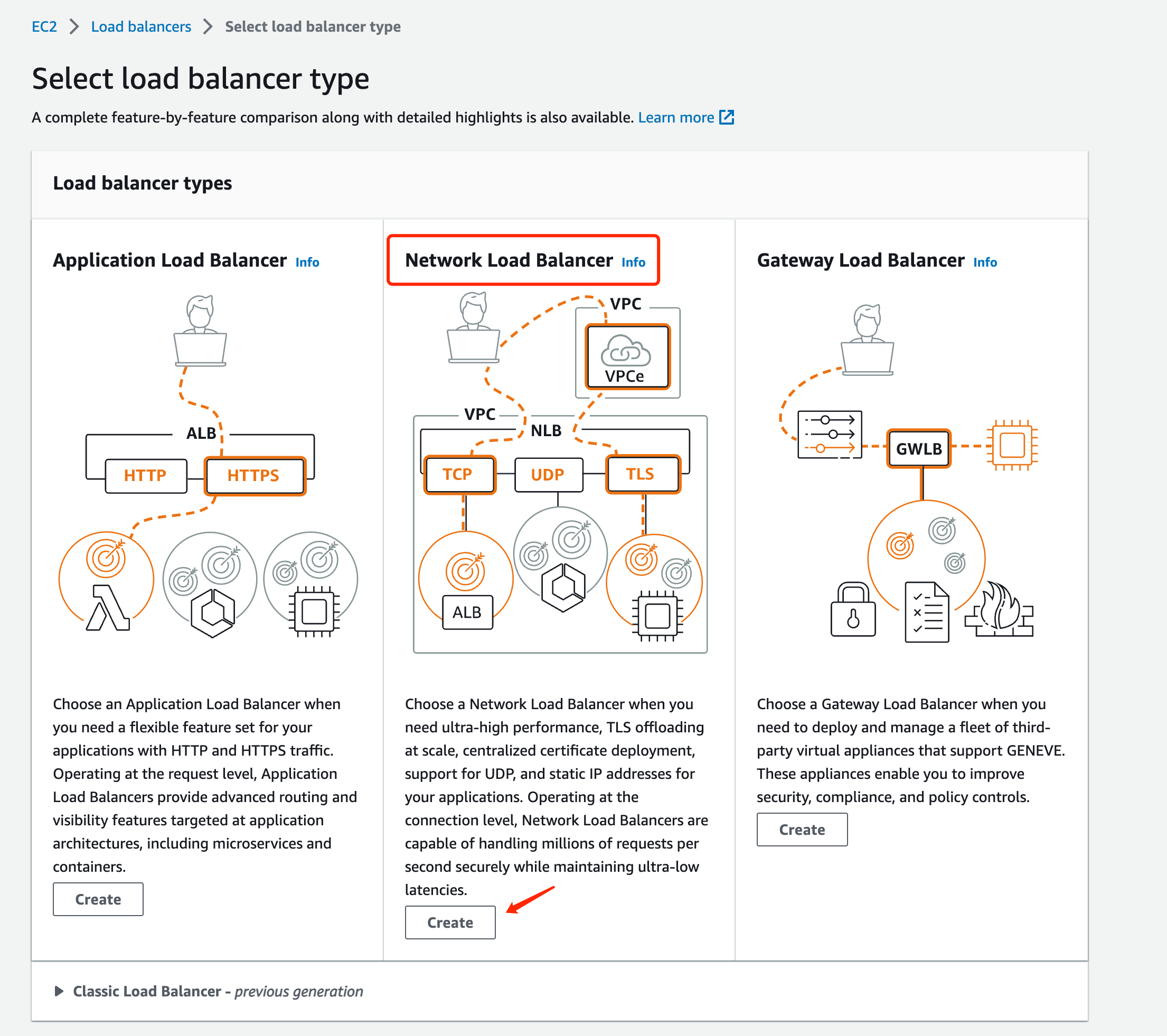
Select the schema type as internal to facilitate requests to private IP addresses.

Select the TCP protocol, fill in the listening port and the corresponding target group.
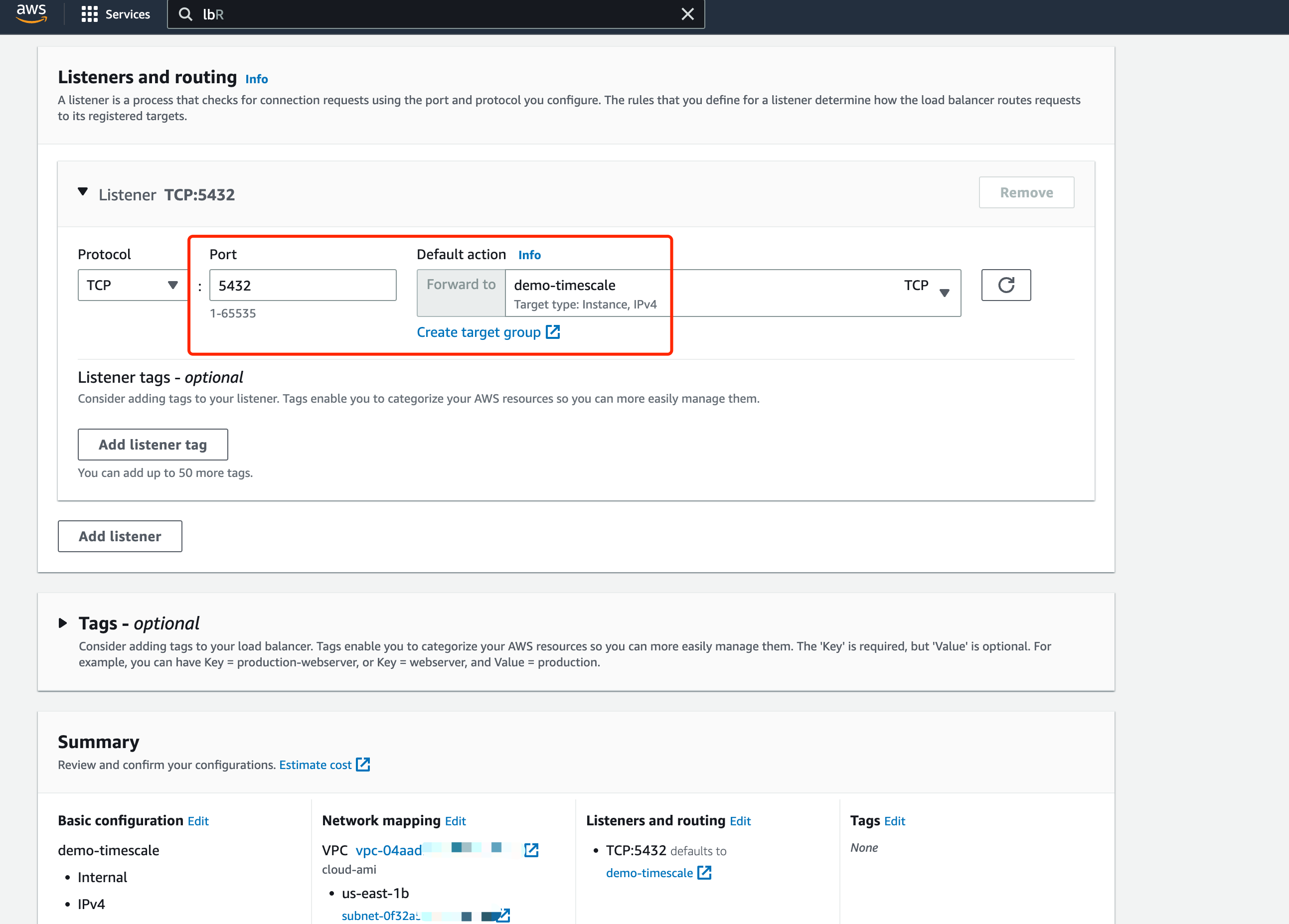
After creating the load balancer, check whether the listening port status of the target group is healthy.
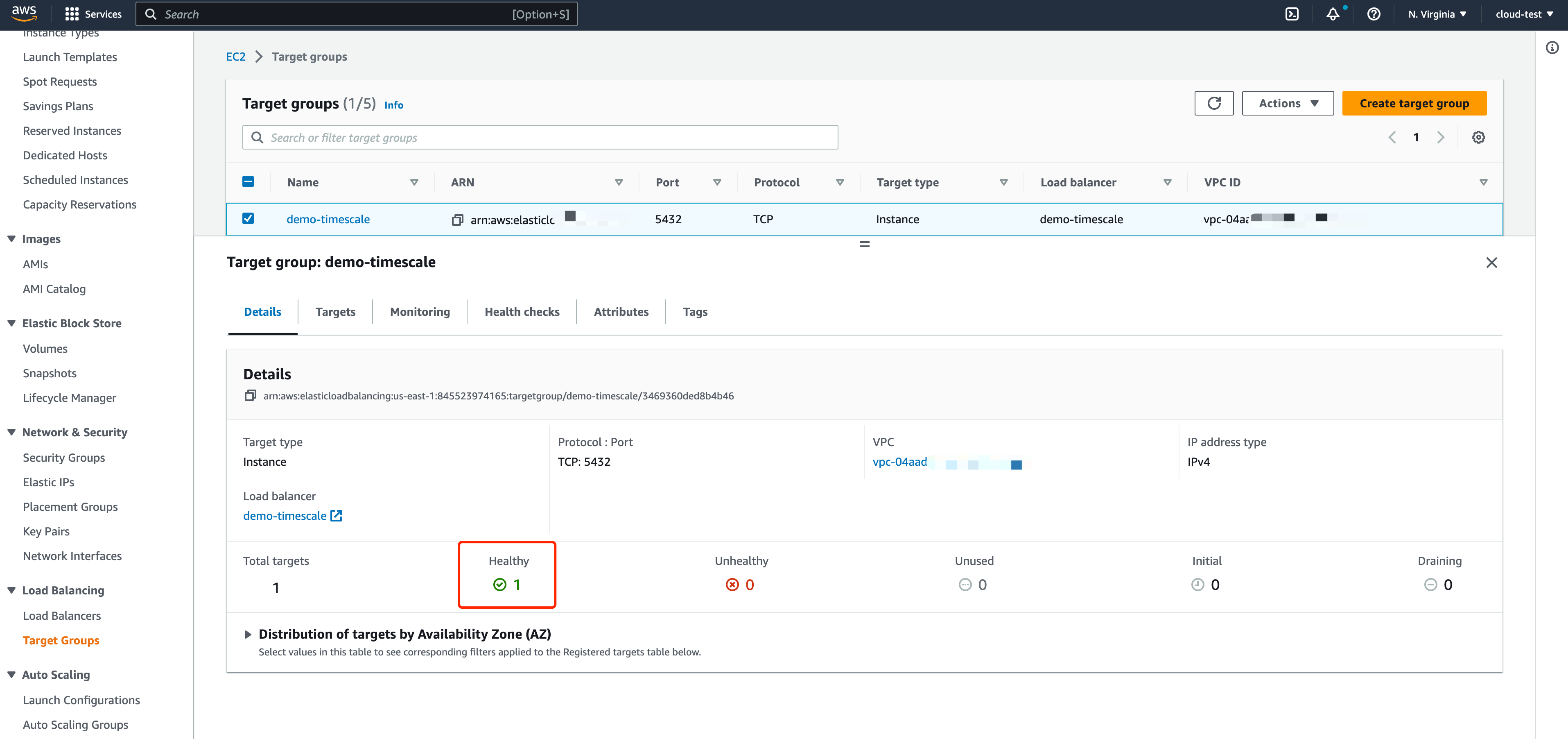
Create An Endpoint Service
Follow the instructions below and refer to AWS Help to complete the configuration.
Find the Endpoint Services in the left menu bar of your AWS account and click Create. Select the load balancer type as Network, and select the load balancer created in the previous step.
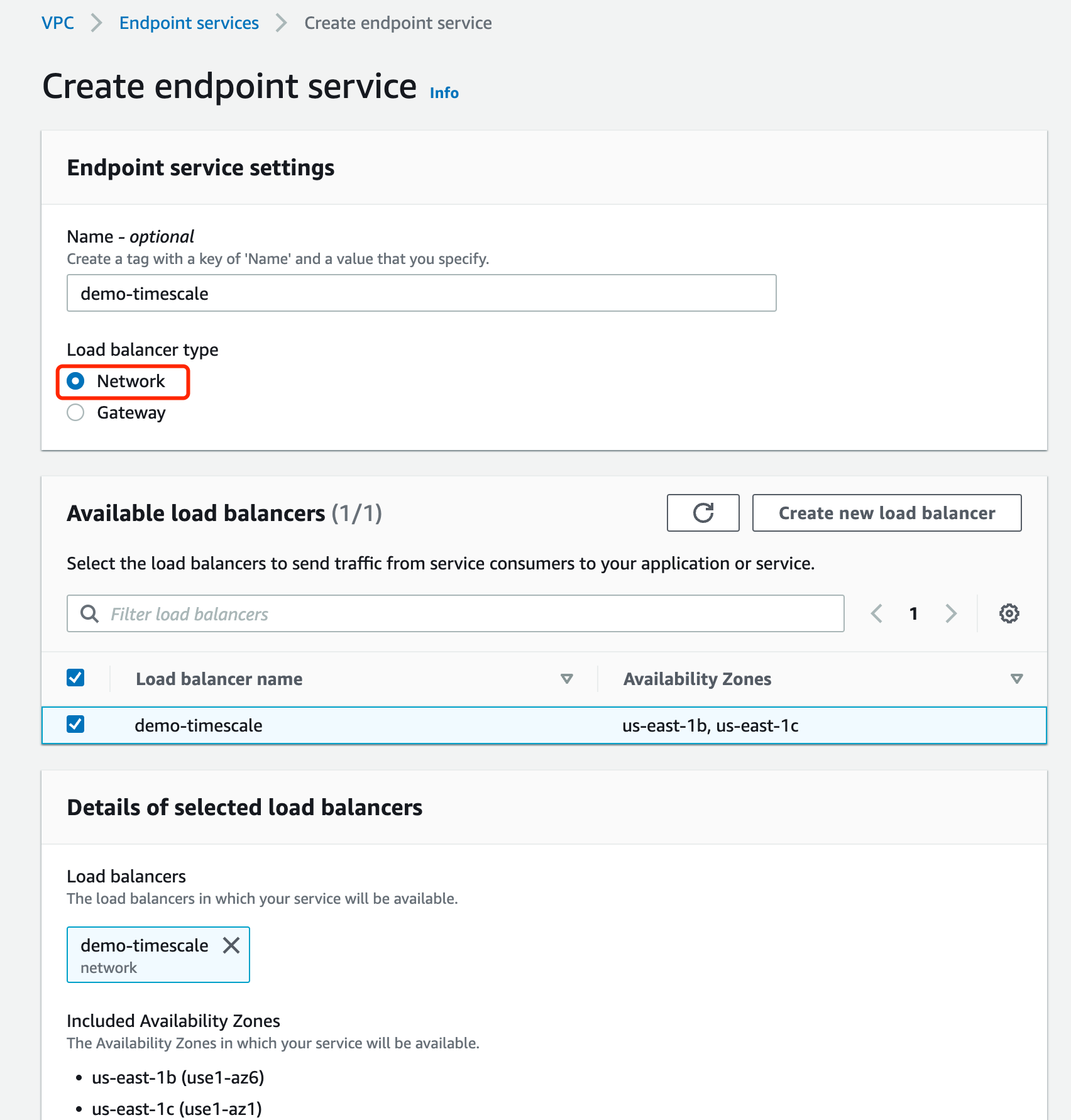
In the additional settings, select the IP address type as IPV4.
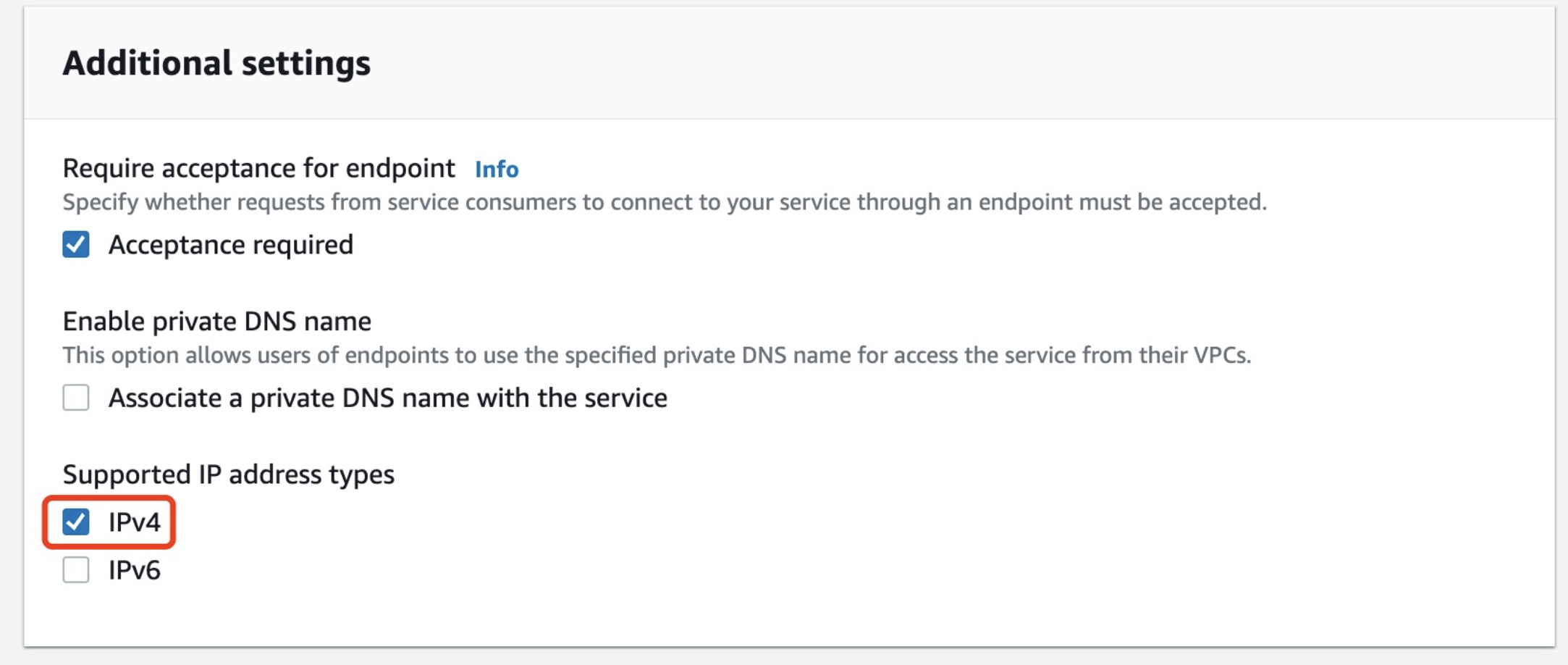
Once created, you will get the endpoint service name.
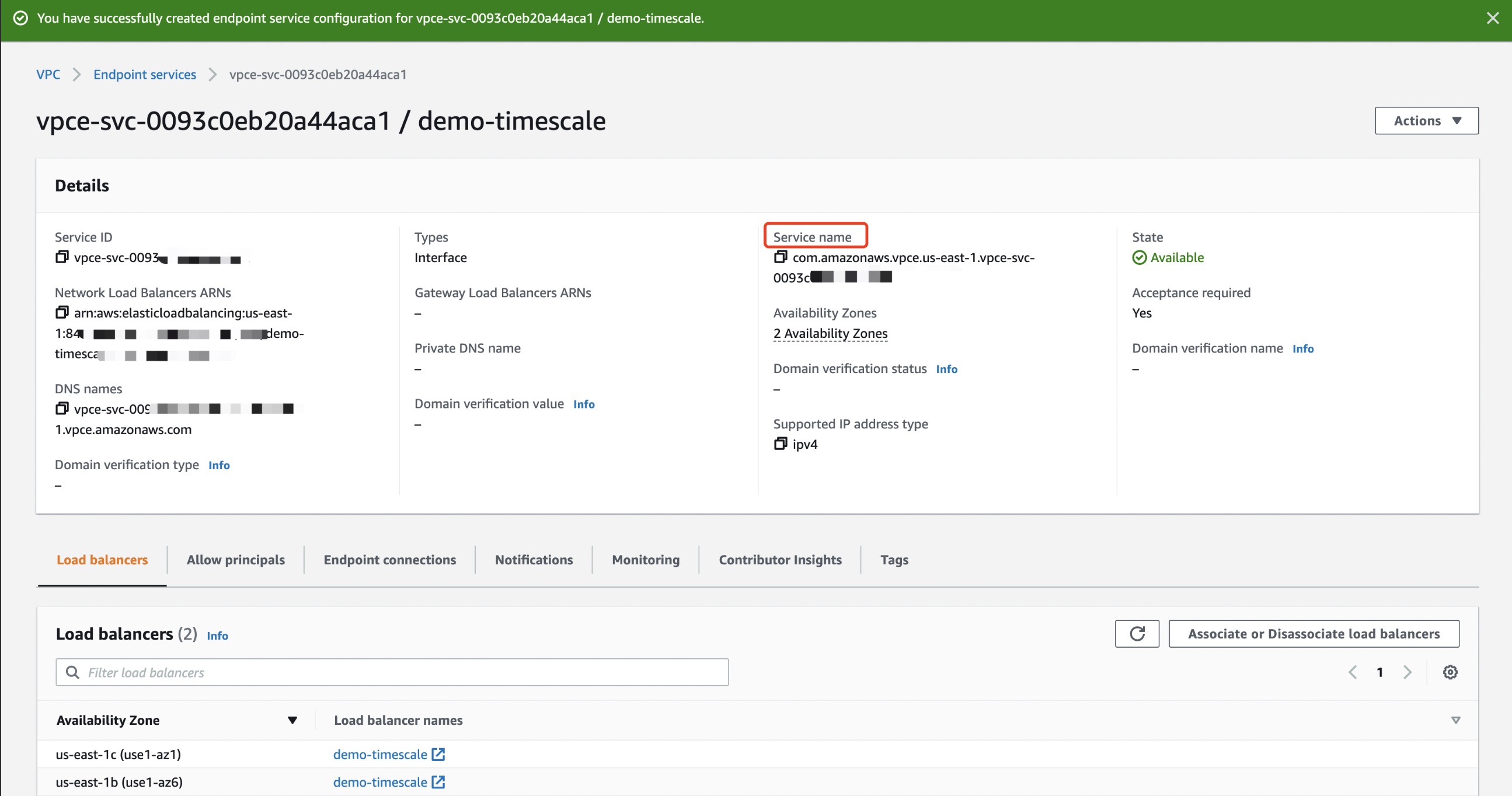
Enable PrivateLink on EMQX Broker
Get the AWS ARN in the PrivateLink Guidelines pop-up in the EMQX Cloud console.
Enter the ARN on the Allowed Principals of your AWS Platform Endpoint services.
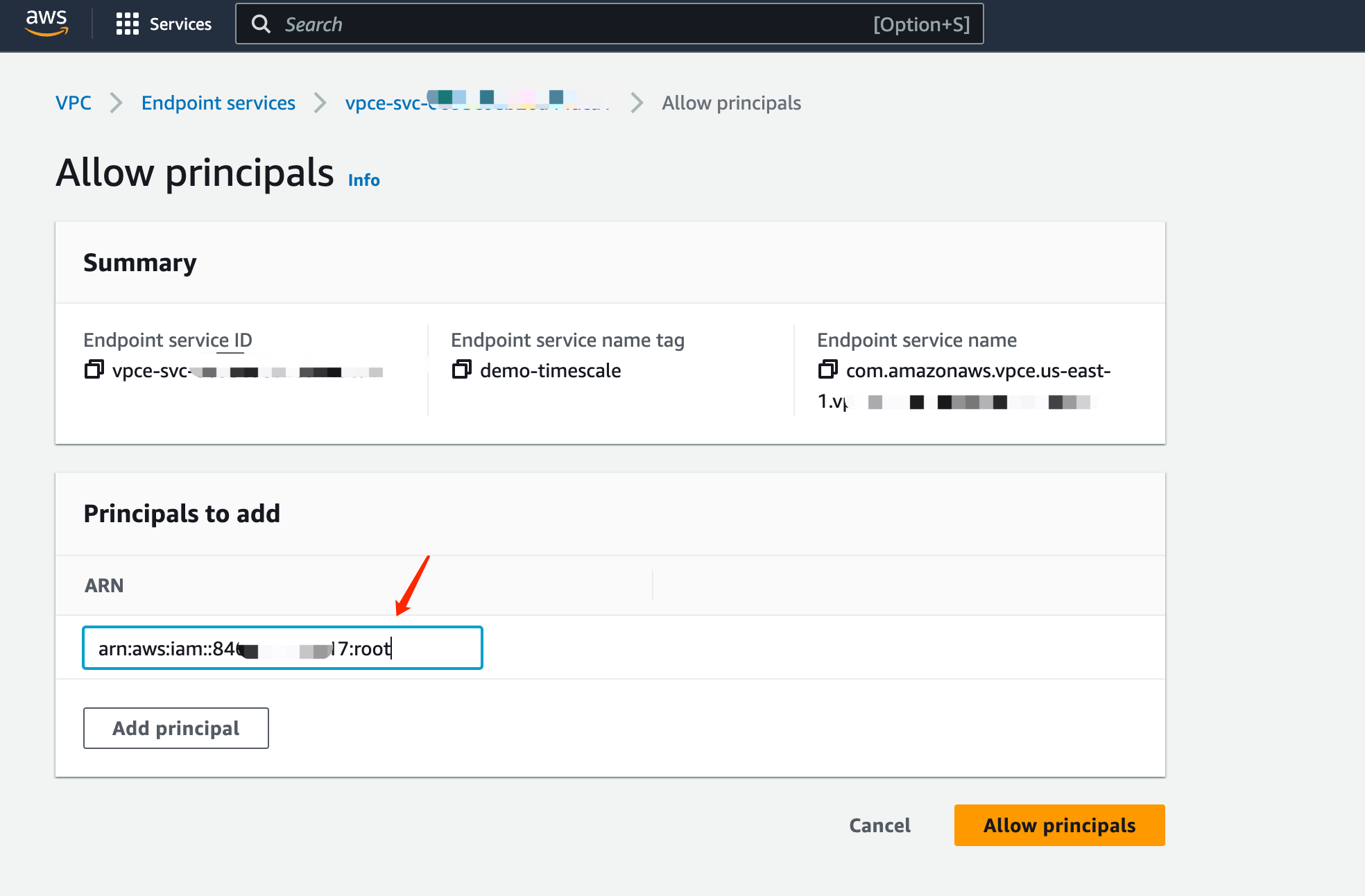
Once added, click Allow principals to continue.
In the AWS platform, locate your Endpoint Service, copy the service name, and enter it into the Enter the name of Endpoint Service field on the EMQX Cloud console. Then, click Create PrivateLink.
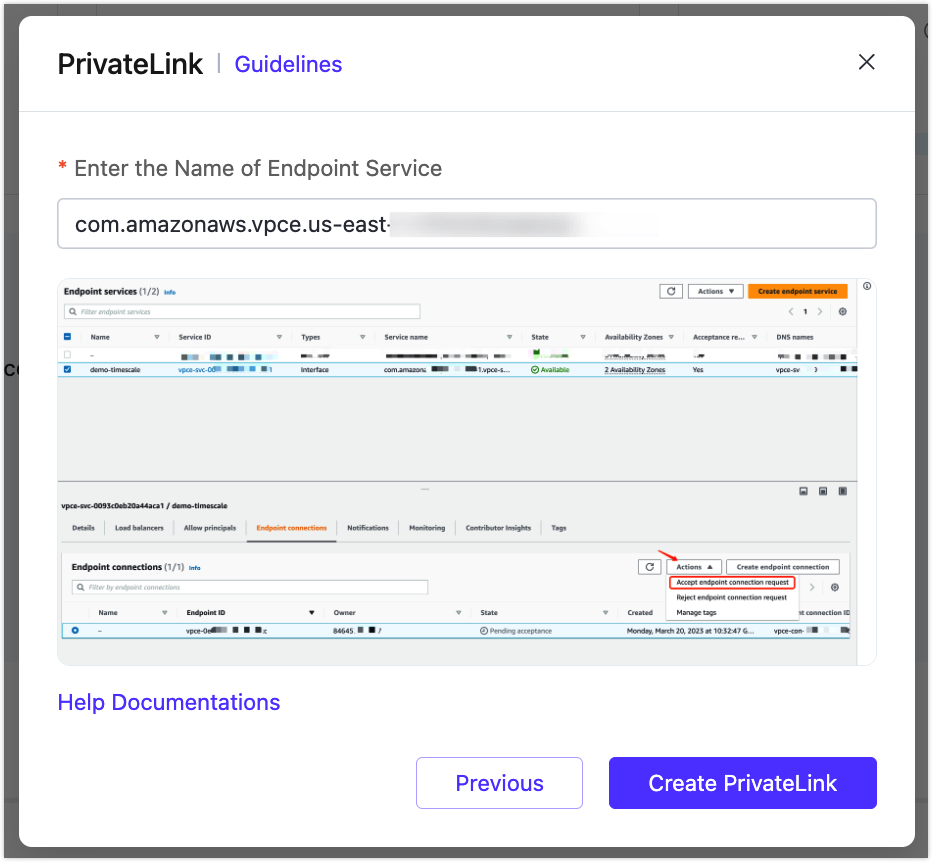
Once completed, find the Endpoint Service - Endpoint Connection in your AWS platform and click
Accept Endpoint Connection Request.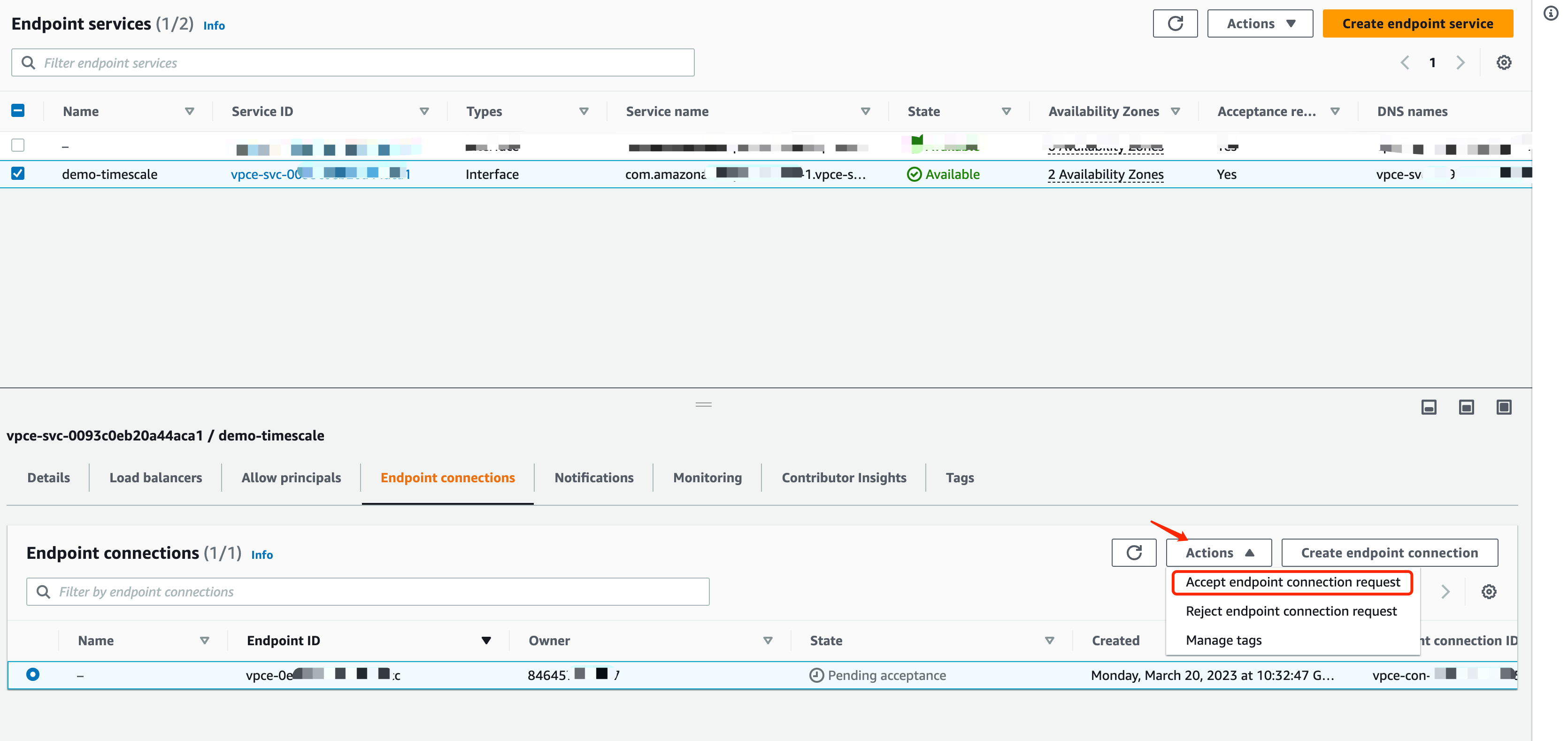
Wait until the status of the PrivateLink in the deployment overview shows
Running, indicating a successful connection.
Delete the PrivateLink
To remove the private connection, you need to ensure that the PrivateLink status is running.
- If you need to remove the PrivateLink service from your AWS platform, please remove the PrivateLink from EMQX Cloud console first, otherwise it will cause PrivateLink status of the deployment to be
failed.- Please ensure that there are no associated resources in the deployment before removing the PrivateLink, otherwise it will lead to unpredictable risks.
Go to the PrivateLink area on the Network Management page of your deployment.
Click the "delete" icon in the Actions column of the PrivateLink. Click Confirm to complete the deletion.
